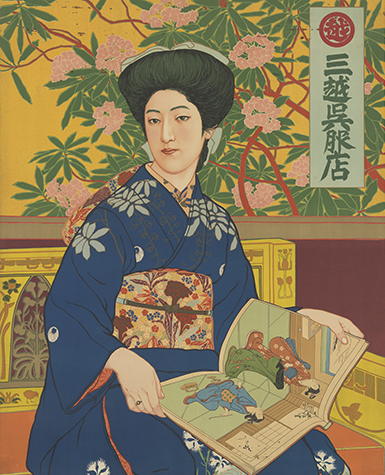Symposium: Meiji Art and Visual Culture
In conjunction with Meiji Modern at the Smart Museum of Art, please join us as leading scholars from the United States, Japan, and Great Britain engage in a wide-ranging discussion of prints, paintings, photographs, and craft objects from the Meiji era.
FREE and open to the public. Space may be limited, please register in advance.
Co-sponsored by the University of Chicago Center for East Asian Studies, with generous support from a Title VI National Resource Center Grant from the U.S. Department of Education; Smart Museum of Art; Center for the Art of East Asia; and International House Global Voices Program.
About the symposium
Disorienting urban transformation, boundless enthusiasm for new technologies and cultures, increased international trade, and rising geopolitical tensions: these circumstances defined Japan’s Meiji era (1868–1912) as much as they describe our own. Taken together with the final decade of the Tokugawa shoguns’ regime, in which Yokohama and other ports opened to direct trade with the US and other nations, this period constitutes “fifty years of new Japan.”
The phrase “fifty years of new Japan” was used by Prime Minister Ōkuma Shigenobu in a book meant to look back on the nation’s progress since kaikoku, literally, the “opening of the country” to global trade, representative government, and unprecedented freedom of expression. While the changes wrought upheaval and uncertainty, many people, including artists, saw the Meiji period as a time of new possibilities and aspirations, global exchange, and progress. Against this backdrop, art emerged as one of Japan’s most profitable industries and a singular means of representing the modern nation-state: in Japan and abroad, art filled international expositions, domestic halls of industry, and private residences. These objects embodied the civic ambitions of Japanese artists and politicians, showcased Japan’s manufacturing capabilities, and displayed the unparalleled skill and sensibility of individual artists who enjoyed recognition on the world stage for the first time.
The “modern” of Meiji Modern refers not only to stylistic modernism, the formal movement associated with Art Nouveau, abstraction, and the rejection of classical models. The title also references artists’ and viewers’ heightened self-consciousness that they were living in the modern era. Meiji art is suffused with enthusiasm for innovative technique. Artists manipulated traditional mediums and materials to achieve dazzling effects unseen—and unimaginable—in previous epochs.
This symposium brings together leading scholars of Meiji art and culture from the United States, Great Britain, and Japan in order to reevaluate an artistic period described in terms of both continuity and change, westernization and the invention of Japanese tradition.
Schedule
Visit the Center for East Asian Studies website for the complete schedule, abstracts, and presenter information.
Exhibition viewing
Friday, May 3, 2024
10–4:30 pm
Smart Museum of Art, 5550 S. Greenwood Avenue
Keynote lecture
Friday, May 3, 2024
3–6 pm
International House, 1414 East 59th Street, Assembly Hall
Welcome and Opening Remarks
Chelsea Foxwell
The University of Chicago
Keynote Lecture (in Japanese with English translation)
Satō Dōshin
Tokyo University of the Arts
Symposium
Saturday, May 4, 2024
9 am–6 pm
International House, 1414 East 59th Street, Assembly Hall
- Bradley Bailey, Museum of Fine Arts, Houston
- Michael Bourdaghs, University of Chicago
- Mami Hatayama, Roger L. Weston Foundation
- Meghen Jones, Alfred University
- Andreas Marks, Minneapolis Institute of Art
- Alison Miller, University of the South
- Rhiannon Paget, Ringling Museum of Art
- Eriko Tomizawa-Kay, University of Michigan
- Alice Tseng, Boston University
- Takurō Tsunoda, Kanagawa Prefectural Museum of Art
Image: Hashiguchi Goyō (1880–1921), This Beauty (Kono bijin) Poster for Mitsukoshi (detail), 1911. Color lithograph, 42 × 29 5⁄8 in. (106.8 × 75.2 cm). Darrel C. Karl Collection. Photograph by Alex Jamison.
